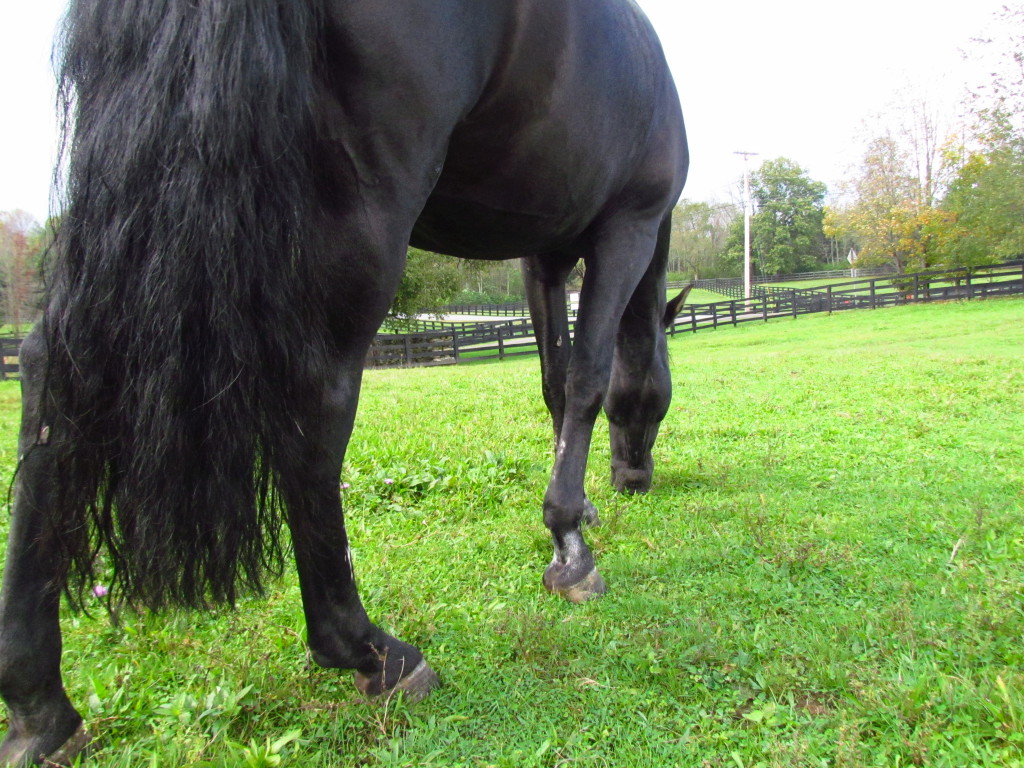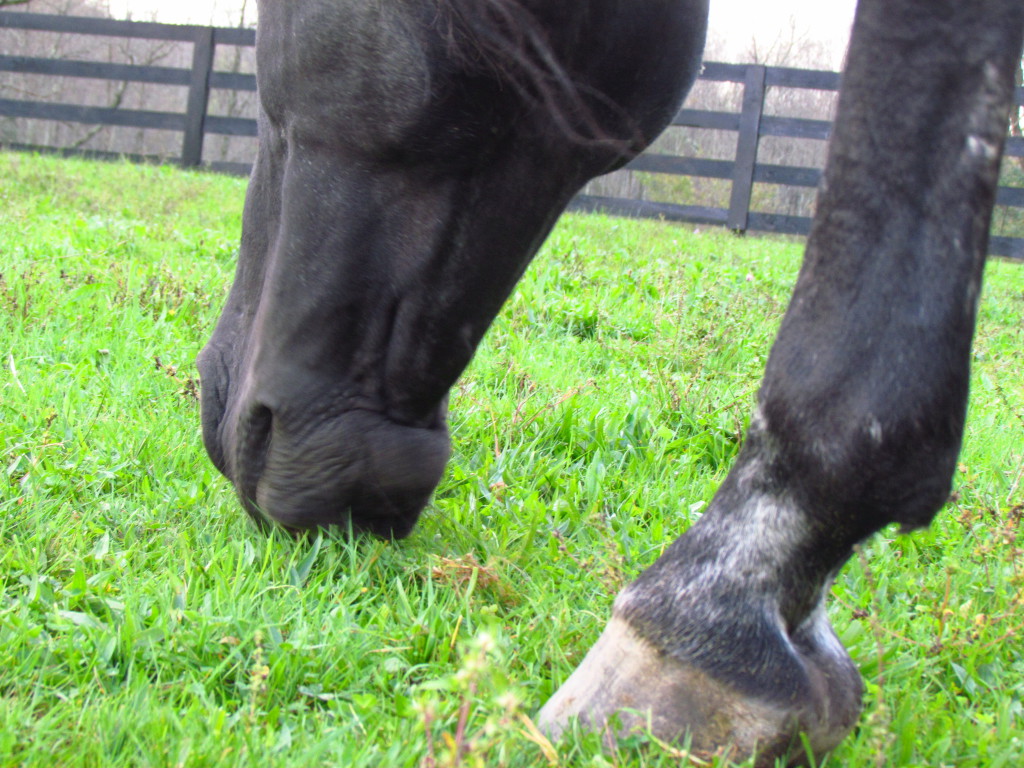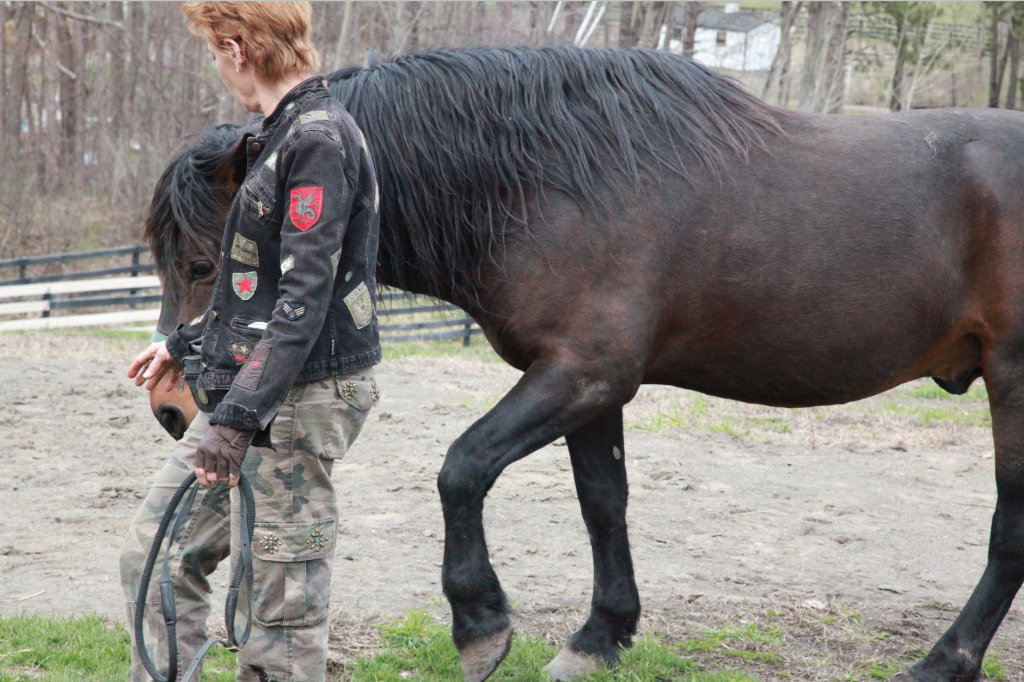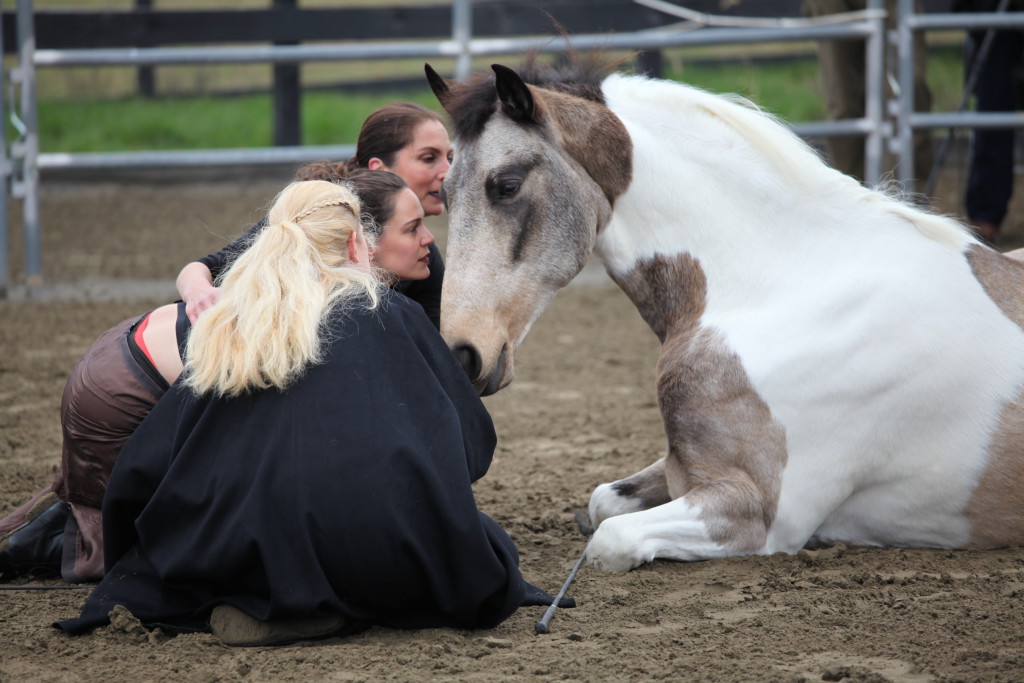 Sarah Hollis, DeAnna Pellecchia, Ingrid Schatz and Pony, in Pony Dances. Photo: Jeffrey Anderson
Sarah Hollis, DeAnna Pellecchia, Ingrid Schatz and Pony, in Pony Dances. Photo: Jeffrey Anderson
The second half of the title of my book, Our Horses, Ourselves, is “Discovering the Common Body”. With that phrase, I want to emphasize that your body is not separate from my body or from the body of the horse, the praying mantis, the hummingbird, the manatee or the earth itself. We are not separate.
The false idea of our separateness is both harmful and in fact painful – teaching us to experience ourselves as essentially disconnected from other beings, other species, and the earth itself.
Every moment, we are sharing air, sharing breath. Our bodies are shedding and absorbing the water that makes up 60-70% of our bodies. At the same time that our “individual” biospheres are interacting and changing each other, we are sharing the biosphere of the earth. In measurable ways, we are continually becoming more and more part of each other.
My colleague Andrea Olsen puts it this way:
“Understanding that body is part of Earth is an essential component of human awareness. Our bones, and our breath, and our blood are the minerals and the air and the water around us, so that when you arrive someplace new, after a few days of drinking the water or eating the food from that place, you become that place. So the idea of separateness starts to fade and this larger model of interconnectedness becomes more primary in our awareness.”
So all living beings are an interconnected, interspecies, biosimilar, cross-pollinating network in a constant flux of adjustment, response, and transformation. Often though, we are not feeling that ongoing connectedness. Or we are feeling the (conscious and unconscious) downside of that inextricable oneness. The pollution and cross-contamination of the toxicity of discourse and environmental action and inaction that surrounds us.
In my experience, the horses can help us with that. There is something so precious and profound about entering the mystery and the silence of connection with them that has little or nothing to do with technique or conventional horsemanship, and everything to do with the deep alignment of relationship and, in the words and practice of the late Pauline Oliveros, Deep Listening.
In my book, I tell the story of Nelson, a Mustang stallion that I had the privilege of working with. He had been captured by the BLM (Bureau of Land Management – the agency that controls the fates of the wild Mustang herds in the West) Nelson was severely traumatized by that experience.
“When I first met Nelson the Mustang, I felt how my body reflected the fractured landscape of fear and withdrawn indifference that he embodied; how
we mirrored each other’s uncertainties and nervousness. Over time that fearful terrain softened into new contours. After many months I noticed that the texture of my body changed when I was with him. I felt that I had been homogenized— as if my body was expressing a single harmonious tone, instead of a hundred nervous, little notes; as if my cells were aligned and humming together like the deep, resonance of a meditation bell. I could feel us echo-locating each other, skin-to-skin, cell-to-cell, bone-to-bone. Later on, when Nelson would seem nervous, instead of reacting, I would settle into my body and wait. Eventually he would join me there, in the shared landscape of breath and stillness.”
In these peculiarly fraught times, I believe that each of us has to find a way of comforting, reassuring, and supporting ourselves. I just finished reading Philip Pullman’s new book, The Book of Dust: La Belle Sauvage. La Belle Sauvage is the sleek little boat that carries the heroes, Malcolm and Alice, through the wild flooding rivers and seas to at least temporary safety.
As I read, I thought about the current wild flooding rivers and seas (political, actual and metaphoric) that are carrying us all to god knows where. I thought about the urgency of finding a way of navigating whatever is here and whatever is coming. A practice, a shelter from the storm. For me, besides my practice as a dance artist, it is the horses. I can soften and rest in the grave and sweet grounding of their presence, the matter-of-factness of them, and the way in which I am held in their witness, the reciprocity of their touch.
For more about that: Embodied Horsemanship
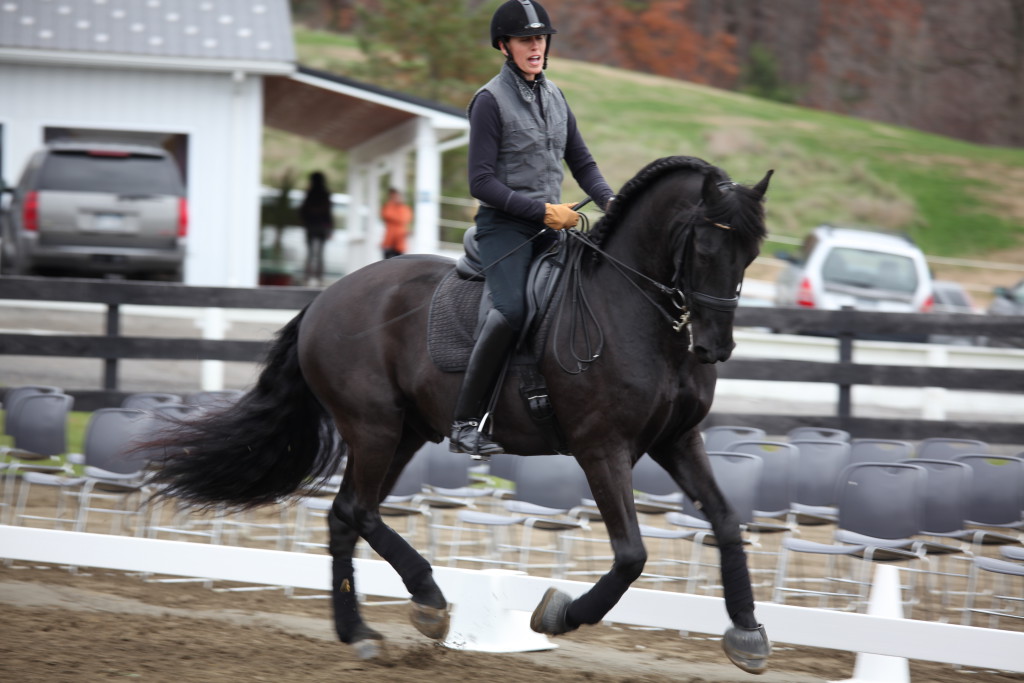 Sanne, ridden by Brandi Rivera
Sanne, ridden by Brandi Rivera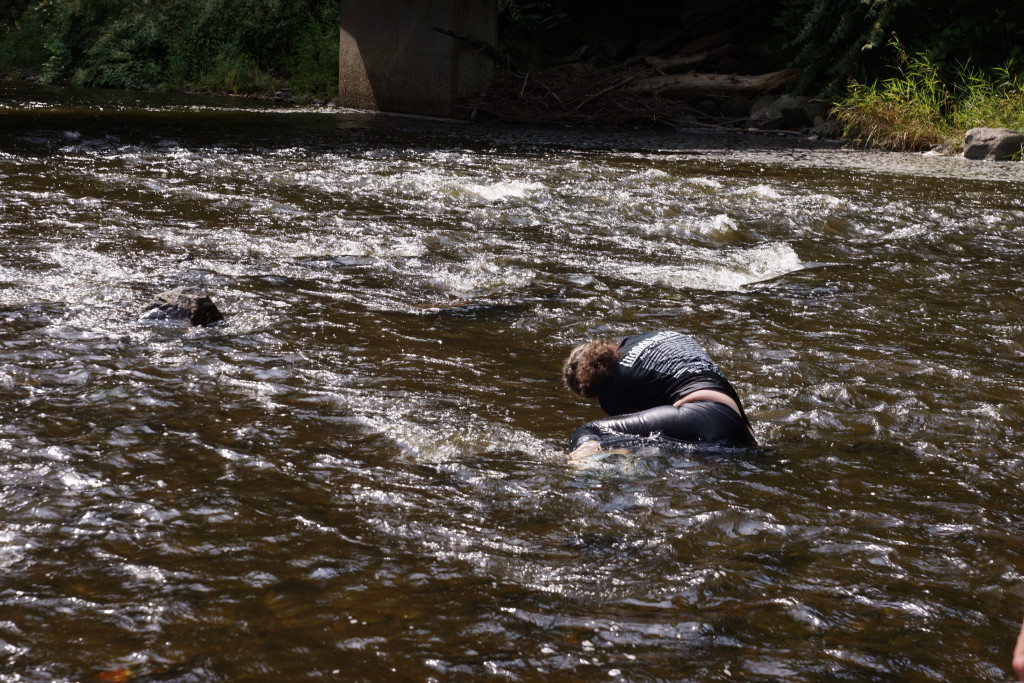 dancer Amy Wynn in the Housatonic
dancer Amy Wynn in the Housatonic